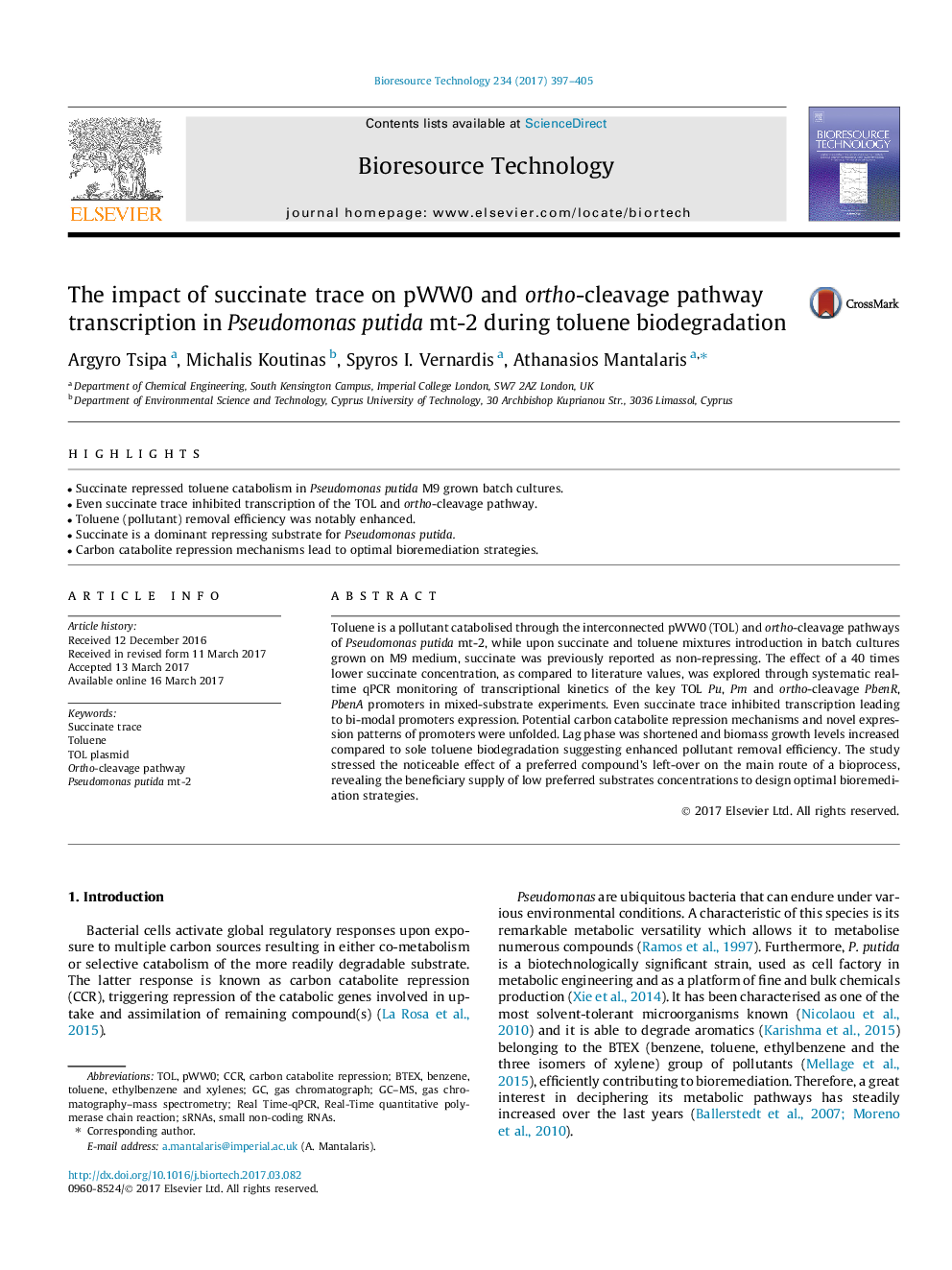| کد مقاله | کد نشریه | سال انتشار | مقاله انگلیسی | نسخه تمام متن |
|---|---|---|---|---|
| 4997315 | 1459909 | 2017 | 9 صفحه PDF | دانلود رایگان |

- Succinate repressed toluene catabolism in Pseudomonas putida M9 grown batch cultures.
- Even succinate trace inhibited transcription of the TOL and ortho-cleavage pathway.
- Toluene (pollutant) removal efficiency was notably enhanced.
- Succinate is a dominant repressing substrate for Pseudomonas putida.
- Carbon catabolite repression mechanisms lead to optimal bioremediation strategies.
Toluene is a pollutant catabolised through the interconnected pWW0 (TOL) and ortho-cleavage pathways of Pseudomonas putida mt-2, while upon succinate and toluene mixtures introduction in batch cultures grown on M9 medium, succinate was previously reported as non-repressing. The effect of a 40 times lower succinate concentration, as compared to literature values, was explored through systematic real-time qPCR monitoring of transcriptional kinetics of the key TOL Pu, Pm and ortho-cleavage PbenR, PbenA promoters in mixed-substrate experiments. Even succinate trace inhibited transcription leading to bi-modal promoters expression. Potential carbon catabolite repression mechanisms and novel expression patterns of promoters were unfolded. Lag phase was shortened and biomass growth levels increased compared to sole toluene biodegradation suggesting enhanced pollutant removal efficiency. The study stressed the noticeable effect of a preferred compound's left-over on the main route of a bioprocess, revealing the beneficiary supply of low preferred substrates concentrations to design optimal bioremediation strategies.
Journal: Bioresource Technology - Volume 234, June 2017, Pages 397-405